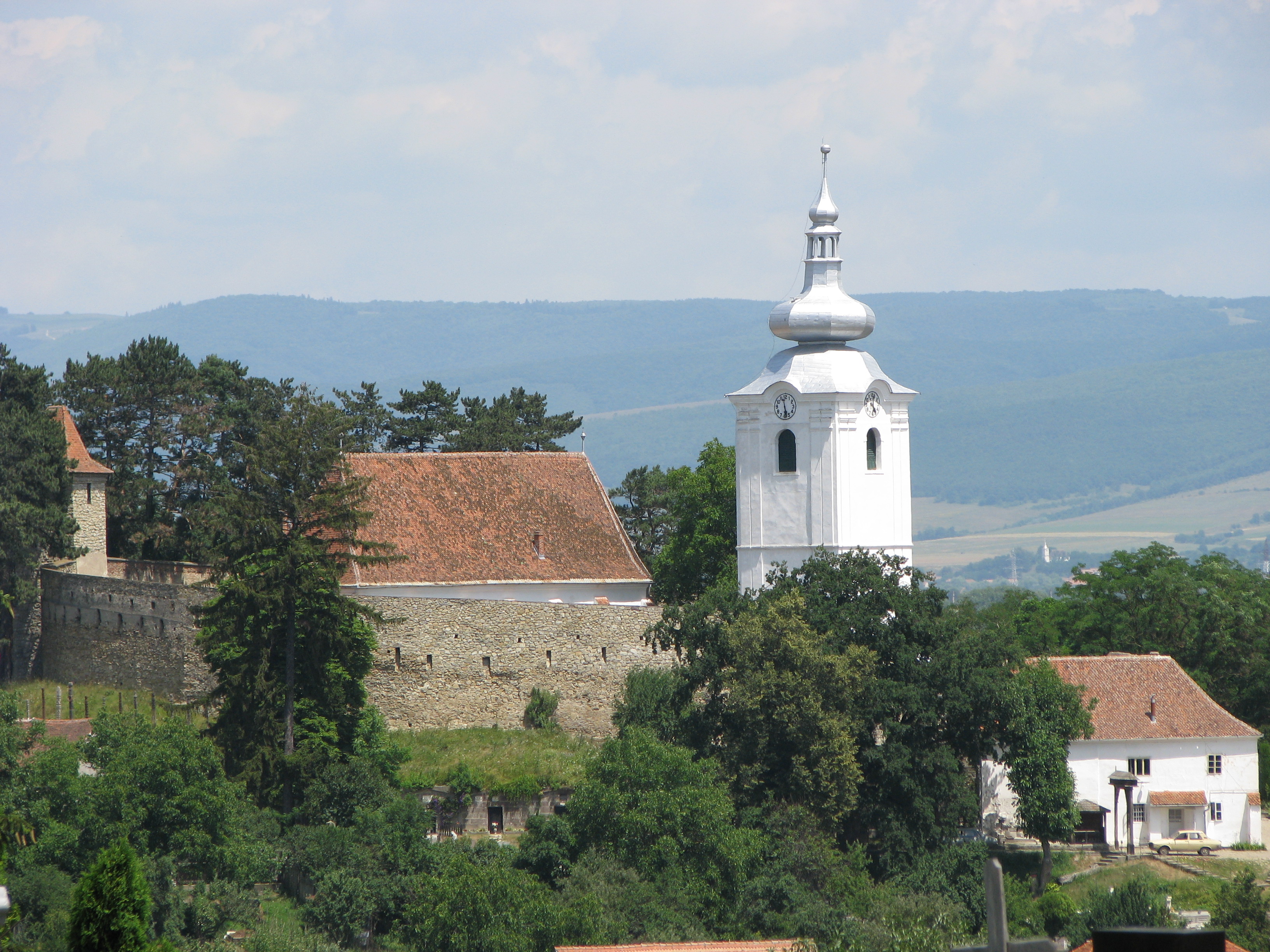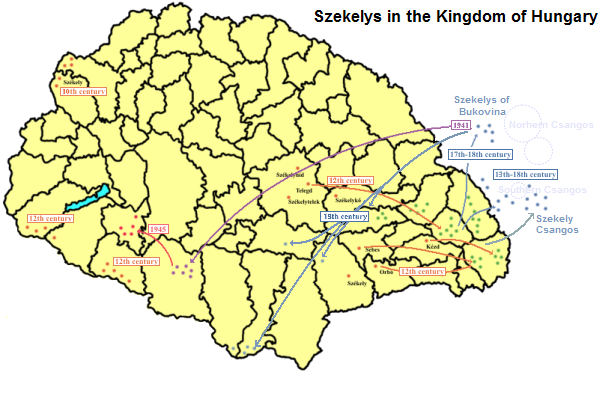|
Boroșneu Mare
Boroșneu Mare (; ) is a commune in Covasna County, Transylvania, Romania composed of six villages: Boroșneu Mare, Boroșneu Mic (''Kisborosnyó''), Dobolii de Sus (''Feldoboly''), Leț (''Lécfalva''), Țufalău (''Cófalva''), and Valea Mică (''Kispatak''). Demographics The commune has an absolute Székely Hungarian majority. According to the 2002 census, it had a population of 3,074, of whom 95.48% or 2,935 were Hungarian. Ar the 2021 census, Boroșneu Mare had a population of 3,186; of those, 89.96% were Hungarians, 4.05% Roma, and 2.45% Romanians Romanians (, ; dated Endonym and exonym, exonym ''Vlachs'') are a Romance languages, Romance-speaking ethnic group and nation native to Central Europe, Central, Eastern Europe, Eastern, and Southeastern Europe. Sharing a Culture of Romania, .... Leț Leț village, which lies on the Dalnic River, had 650 people in 2002, of whom 557 were Székely. It was settled during the Stone Age. Evidence of multicoloured painting ... [...More Info...] [...Related Items...] OR: [Wikipedia] [Google] [Baidu] |
Covasna County
Covasna County (, , ) is a county (județ) of Romania, in eastern Transylvania, with the county seat at Sfântu Gheorghe. Demographics In 2011, it had a population of 210,177, making it the second least populous of Romania's 41 counties and the population density was . In 2002 the ethnic composition of the county was as follows: * Hungarians in Romania, Hungarians – 73.58% (or 164,158) * Romanians – 23.28% (or 51,790) * Romani people in Romania, Romani – 2.68% (or 5,973) According to the 2011 Romanian census, 2011 census, the composition of the county was: * Hungarians in Romania, Hungarians – 73.74% (or 150,468) * Romanians – 22.02% (or 45,021) * Romani people in Romania, Romani – 4.05% (or 8,267) * Minorities of Romania, Others – 0.19% According to the 2021 Romanian census, 2021 census, the composition of the county was: * Hungarians in Romania, Hungarians – 71.77% (or 133,444) * Romanians – 22.99% (or 42,752) * Romani people in Romania, Romani – 5.11% ... [...More Info...] [...Related Items...] OR: [Wikipedia] [Google] [Baidu] |
Transylvania
Transylvania ( or ; ; or ; Transylvanian Saxon dialect, Transylvanian Saxon: ''Siweberjen'') is a List of historical regions of Central Europe, historical and cultural region in Central Europe, encompassing central Romania. To the east and south its natural border are the Carpathian Mountains and to the west the Apuseni Mountains. Broader definitions of Transylvania also include the western and northwestern Romanian regions of Crișana and Maramureș, and occasionally Banat. Historical Transylvania also includes small parts of neighbouring Western Moldavia and even a small part of south-western neighbouring Bukovina to its north east (represented by Suceava County). Transylvania is known for the scenery of its Carpathian landscape and its rich history, coupled with its multi-cultural character. It also contains Romania's second-largest city, Cluj-Napoca, and other very well preserved medieval iconic cities and towns such as Brașov, Sibiu, Târgu Mureș, Bistrița, Alba Iuli ... [...More Info...] [...Related Items...] OR: [Wikipedia] [Google] [Baidu] |
Székelys
The Székelys (, Old Hungarian script, Székely runes: ), also referred to as Szeklers, are a Hungarians, Hungarian subgroup living mostly in the Székely Land in Romania. In addition to their native villages in Suceava County in Bukovina, a significant population descending from the Székelys of Bukovina currently lives in Tolna County, Tolna and Baranya County, Baranya counties in Hungary and certain districts of Vojvodina, Serbia. In the Middle Ages, the Székelys played a role in the defense of the Kingdom of Hungary#Middle Ages, Kingdom of Hungary against the Ottoman Empire, Ottomans in their posture as guards of the eastern border. With the Treaty of Trianon of 1920, Transylvania (including the Székely Land) became part of Romania, and the Székely population was a target of Romanianization efforts. In 1952, during the Socialist Republic of Romania, communist rule of Romania, the former counties with the highest concentration of Székely population – Mureș County#His ... [...More Info...] [...Related Items...] OR: [Wikipedia] [Google] [Baidu] |
Hungarians In Romania
The Hungarian minority of Romania (, ; ) is the largest Minorities of Romania, ethnic minority in Romania. As per the 2021 Romanian census, 1,002,151 people (6% of respondents) declared themselves Hungarian, while 1,038,806 people (6.3% of respondents) stated that Hungarian language, Hungarian was their mother tongue. Most Hungarians, ethnic Hungarians of Romania live in areas that were parts of Hungary before the Treaty of Trianon of 1920. Encompassed in a region known as Transylvania, the most prominent of these areas is known generally as Székely Land (; ), where Hungarians comprise the majority of the population. Transylvania, in the larger sense, also includes the historic regions of Banat, Crișana and Maramureș. There are forty-one counties of Romania; Hungarians form a large majority of the population in the counties of Harghita County, Harghita (85.21%) and Covasna County, Covasna (73.74%), and a large percentage in Mureș County, Mureș (38.09%), Satu Mare Count ... [...More Info...] [...Related Items...] OR: [Wikipedia] [Google] [Baidu] |
2021 Romanian Census
The 2021 Romanian census () was a census held in Romania between 1 February and 31 July 2022, with the reference day for the census data set at 1 December 2021. The census was supposed to be done in 2021, but it was postponed due to the COVID-19 pandemic in Romania in order to avoid census takers from getting infected when coming into contact with ill or quarantined people. It was the first census held in Romania in which data was collected online, something that had support among Romanian youth. The census was divided into three phases: one in which personal data of the Romanian population was collected from various sites; another in which the population was to complete more precise data such as religion, in which town halls would help the natives of rural areas to answer the census; and a third one in which census takers would go to the homes and households of those who did not register their data online. Data for this census was planned not to be collected on paper, but inste ... [...More Info...] [...Related Items...] OR: [Wikipedia] [Google] [Baidu] |
Romani People In Romania
Romani people in Romania, locally and pejoratively referred to as the (), constitute the second largest ethnic minority in the country (the first being Hungarians). According to the 2021 census, their number was 569,477 people and 3.4% of the total population. The size of the total population of people with Romani ancestry in Romania is even more, with different estimates varying from 4.6 percent to over 10 percent of the population, because many people of Romani descent do not declare themselves Roma. For example, in 2007 the Council of Europe estimated that approximately 1.85 million Roma lived in Romania, based on an average between the lowest estimate (1.2 to 2.2 million people) and the highest estimate (1.8 to 2.5 million people) available at the time. This figure is equivalent to 8.32% of the population. On the other hand, less than half are native speakers of the Romani language. Origins History, genetics and linguistics all indicate the Roma originate from northern Indi ... [...More Info...] [...Related Items...] OR: [Wikipedia] [Google] [Baidu] |
Romanians
Romanians (, ; dated Endonym and exonym, exonym ''Vlachs'') are a Romance languages, Romance-speaking ethnic group and nation native to Central Europe, Central, Eastern Europe, Eastern, and Southeastern Europe. Sharing a Culture of Romania, common culture and Cultural heritage, ancestry, they speak the Romanian language and live primarily in Romania and Moldova. The 2021 Romanian census found that 89.3% of Romania's citizens identified themselves as ethnic Romanians. In one interpretation of the 1989 census results in Moldova, the majority of Moldovans were counted as ethnic Romanians as well.''Ethnic Groups Worldwide: A Ready Reference Handbook By'' David Levinson (author), David Levinson, Published 1998 – Greenwood Publishing Group.At the time of the 1989 census, Moldova's total population was 4,335,400. The largest nationality in the republic, ethnic Romanians, numbered 2,795,000 persons, accounting for 64.5 percent of the population. Source U.S. Library of Congres ... [...More Info...] [...Related Items...] OR: [Wikipedia] [Google] [Baidu] |
National Institute Of Statistics (Romania)
The National Institute of Statistics (, INS) is a Romanian government agency which is responsible for collecting national statistics, in fields such as geography, the economy, demographics and society. The institute is also responsible for conducting Romania's census every ten years, with the latest census being organised in 2022. Leadership The head of the NIS is currently Tudorel Andrei, while the three vice-presidents are: * Ioan-Silviu VÎRVA, in charge of economic and social statistics * Marian Chivu, in charge of national accounts and the dissemination of statistical information * Beatrix Gered, in charge of IT activities and statistical infrastructure History Romania's first official statistics body was the Central Office for Administrative Statistics (''Oficiul Central de Statistică Administrativă''), established on July 12, 1859, under the reign of Alexandru Ioan Cuza. The organisation, one of the first national statistics organisations in Europe, conducted its ... [...More Info...] [...Related Items...] OR: [Wikipedia] [Google] [Baidu] |
Dalnic River
The Dalnic is a right tributary of the Râul Negru in Romania Romania is a country located at the crossroads of Central Europe, Central, Eastern Europe, Eastern and Southeast Europe. It borders Ukraine to the north and east, Hungary to the west, Serbia to the southwest, Bulgaria to the south, Moldova to .... It flows into the Râul Negru near Leț. e-calauza.ro Its length is and its basin size is . References Rivers of Romania Rivers of Covasna County {{Covasna-river-stub ...[...More Info...] [...Related Items...] OR: [Wikipedia] [Google] [Baidu] |
Unitarianism
Unitarianism () is a Nontrinitarianism, nontrinitarian sect of Christianity. Unitarian Christians affirm the wikt:unitary, unitary God in Christianity, nature of God as the singular and unique Creator deity, creator of the universe, believe that Jesus Christ was Divine inspiration, inspired by God in his moral teachings and that he is the Redeemer (Christianity), savior of mankind,. but he is not equal to God himself. Accordingly, Unitarians reject the Ecumenical Councils and ecumenical creeds, and sit outside traditional, mainstream Christianity. Unitarianism was established in order to restore "Restorationism, primitive Christianity before later corruptions set in". Likewise, Unitarian Christians generally reject the doctrine of original sin. The churchmanship of Unitarianism may include Liberal Christianity, liberal Christian denominations, denominations or Unitarian Christian denominations that are more Conservatism, conservative, with the latter being known as Biblical unit ... [...More Info...] [...Related Items...] OR: [Wikipedia] [Google] [Baidu] |
Communes In Covasna County
A commune is an alternative term for an intentional community. Commune or comună or comune or other derivations may also refer to: Administrative-territorial entities * Commune (administrative division), a municipality or township ** Communes of Algeria ** Communes of Angola ** Communes of Belgium ** Communes of Benin ** Communes of Burundi ** Communes of Chile ** Communes of the Democratic Republic of the Congo ** Communes of France ** Communes of Italy, called ''comune'' ** Communes of Luxembourg ** Communes of Moldova, called ''comună'' ** Communes of Niger ** Communes of Romania, called ''comună'' ** Communes of Switzerland ** Commune-level subdivisions (Vietnam) *** Commune (Vietnam) *** Commune-level town (Vietnam) ** People's commune, highest of three administrative levels in rural China, 1958 to 1983 Government and military/defense * Agricultural commune, intentional community based on agricultural labor * Commune (rebellion), a synonym for uprising or revolu ... [...More Info...] [...Related Items...] OR: [Wikipedia] [Google] [Baidu] |




